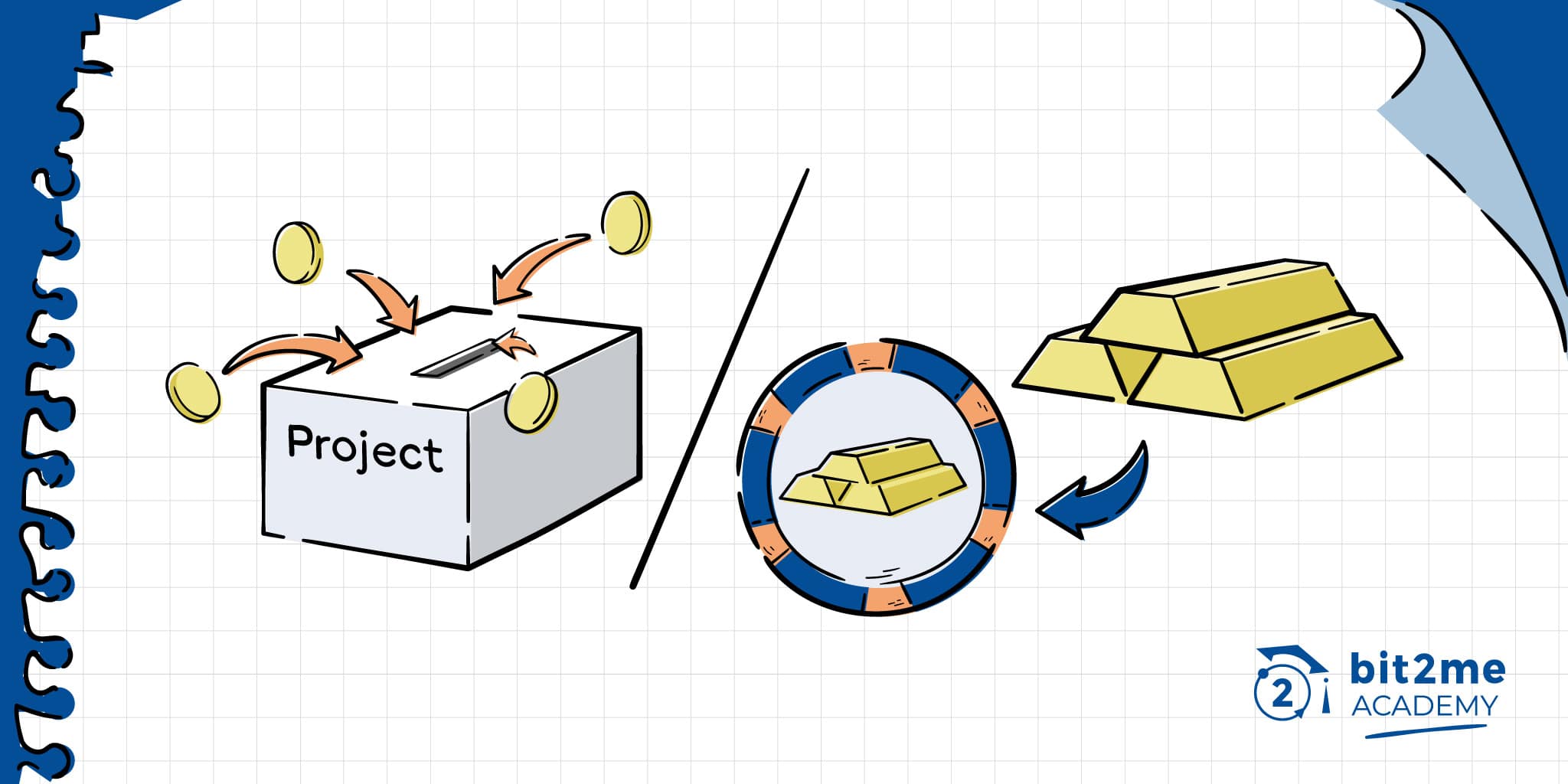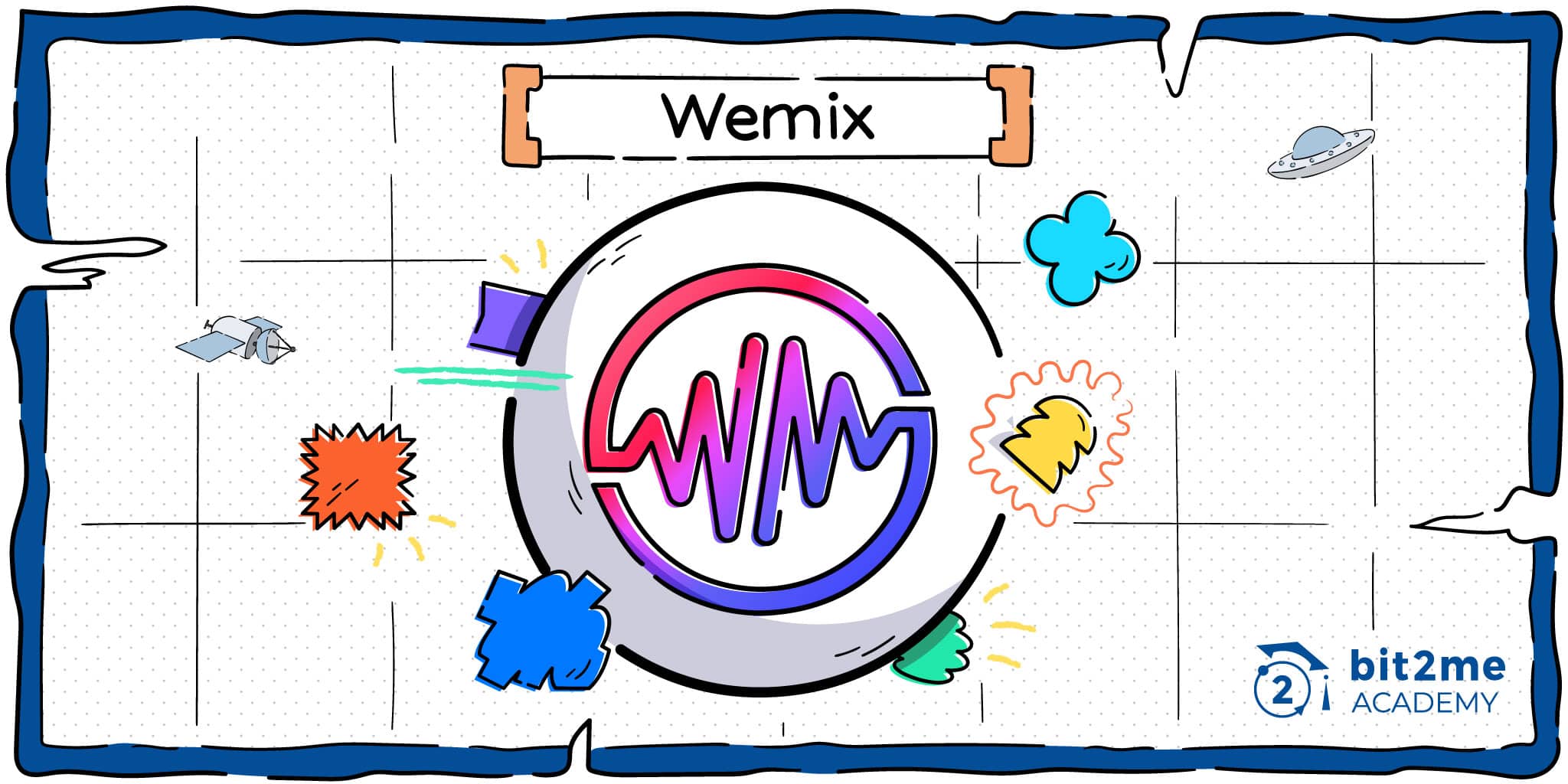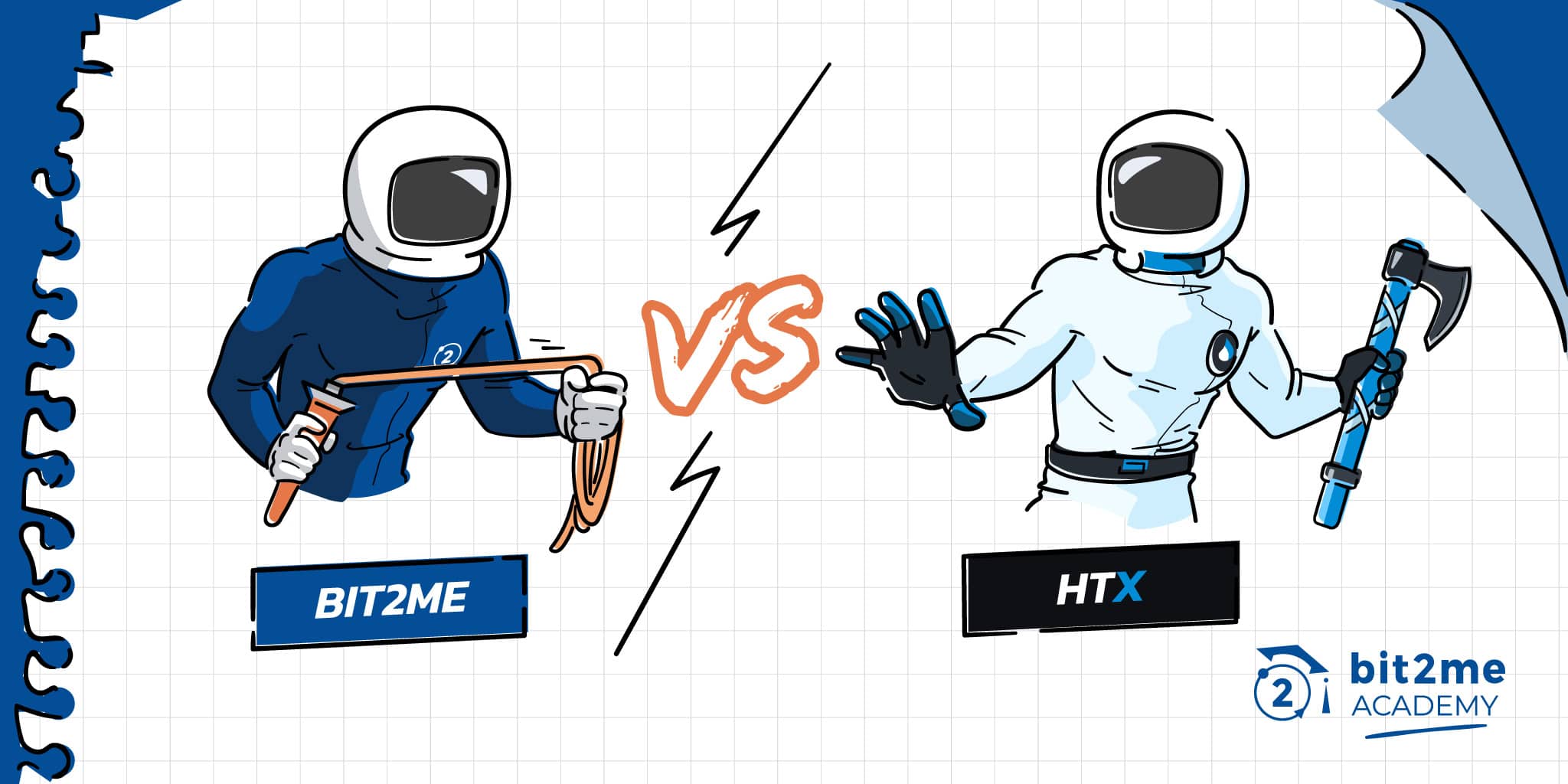The most enigmatic identity in the world of cryptocurrencies is that of Satoshi Nakamoto. A faceless pseudonym and nothing more than a series of emails that left behind one of the greatest and most important technological creations of humanity. Bitcoin and the blockchain. Know everything we know about this character or group of people so far.
En the history of Bitcoin There is a question that until now has been impossible to answer and which one tries to answer by all means, that question is: Who is Satoshi Nakamoto?
The creator of the idea and developer of Bitcoin free software does not have a known face, as it really is a pseudonym. Initially it was thought that he was someone of Japanese descent. But as time passes, and a disappearance just as enigmatic as its appearance, all kinds of speculation have arisen.
During this time, some names of people or organizations have appeared to which various theories point to more or less possibilities. Within the hypotheses raised there is a bit of everything, from the people who claim to be Nakamoto without providing any proof. There are even arguments where conspiracies or aliens are not lacking, for now we will leave the latter aside.
The truth is that to date it is NOTknown who, who or what is Satoshi Nakamoto: the creator of Bitcoin and the germ of a whole technological revolution called Blockchainthat has turned around, not only the financial sector, but almost all sectors of the planet in search of environments without intermediaries, safety and transparent as well as guarantors of privacy.
[Tweet "Who, who or what is Satoshi Nakamoto, creator of #Bitcoin?"]
Within the first part we will expose a series of events related to Satoshi Nakamoto to draw a timeline with the most relevant points. Then we will see who the most outstanding people are in the search for Nakamoto. And finally, a group of names that is targeted, but that seems highly unlikely to be.
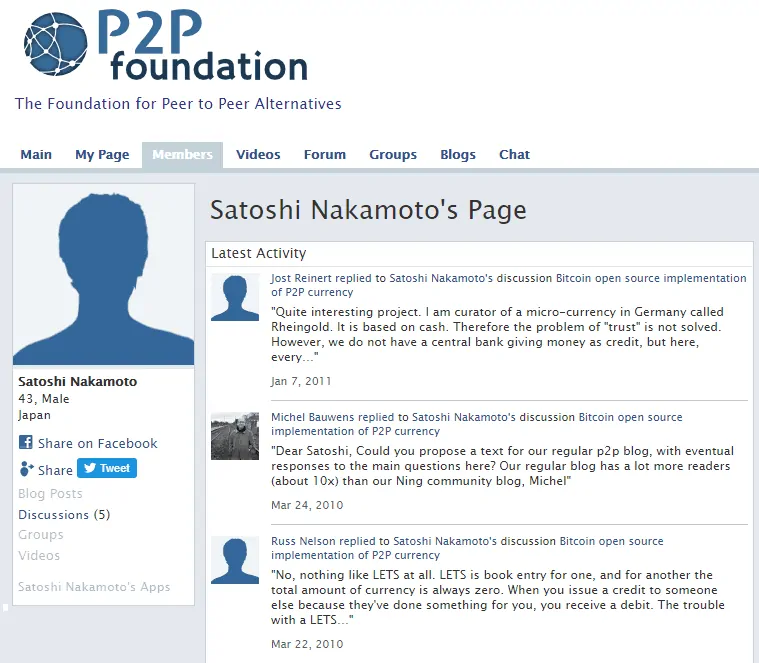
Satoshi Nakamoto's profile at the P2P Foundation indicating he is a 43-year-old Japanese man
Satoshi Nakamoto Chronology
Within this first section we are going to focus on the most relevant interventions by Nakamoto. We will go from his first public communication until he disappeared without notice.
- Friday, 31/10/2008: Satoshi Nakamoto on crypto mailing list Metzdown.com first talks about Bitcoin publishing your whitepaper
- Monday, 17/11/2008: In one of Nakamoto's messages in the crypto email account, he responds to James A. Donald, indicating that he has been developing Bitcoin for a year and a half.
- Friday, 09/01/2009: Satoshi Nakamoto uploads version 0.1 of the Bitcoin software
- Saturday, 10/01/2009: Hal Finney, the first Bitcoin user after Satoshi Nakamoto, posts the following message on his Twitter account: 'Running Bitcoin'
- Monday, 12/01/2009: The first transaction in the history of Bitcoin. Hal Finney receives 10 bitcoins from Satoshi Nakamoto in a test to test the network and that everything was correctly
- Sunday, 22/11/2009: Nakamoto publishes the first message from the famous Bitcointalk forum, welcoming users
- Monday, 13/12/2010: Satoshi Nakamoto's latest post on Bitcointalk announcing the release of version 0.3.19 of the Bitcoin software
- Friday, 07/03/2014: Given the social debate about a possible Satoshi Nakamoto (Dorian Nakamoto, which we will talk about later), Satoshi Nakamoto published what would be his last message on the internet saying "I am not Dorian Nakamoto«.
These are the most relevant opening and closing points of Nakamoto's presence to date. Within this chronology there were two relevant facts that we do not know to what extent they are true and we want to highlight:
Tuesday, 26 / 04 / 2011
That day Satoshi Nakamoto sent the last email to Gavin Andresen, in the letter Nakamoto asks Andresen to stop talking about him 'like a mysterious figure in the shade' and urges him to emphasize that "is an open source project and give more emphasis to the contributions of your collaborators »
Andresen answers the email and explains that he has been contacted by IQT, a "strategic investment" company that is financed by the United States Government. This in order to give a conference. He indicates that he will post it on the forums to avoid the suspicion that 'Gavin secretly visits the CIA' awakening multiple conspiracy theories. Although he assures that saying 'Gavin openly visits the CIA' will also give rise to mixed conspiracies.
Nakamoto never answers this email.
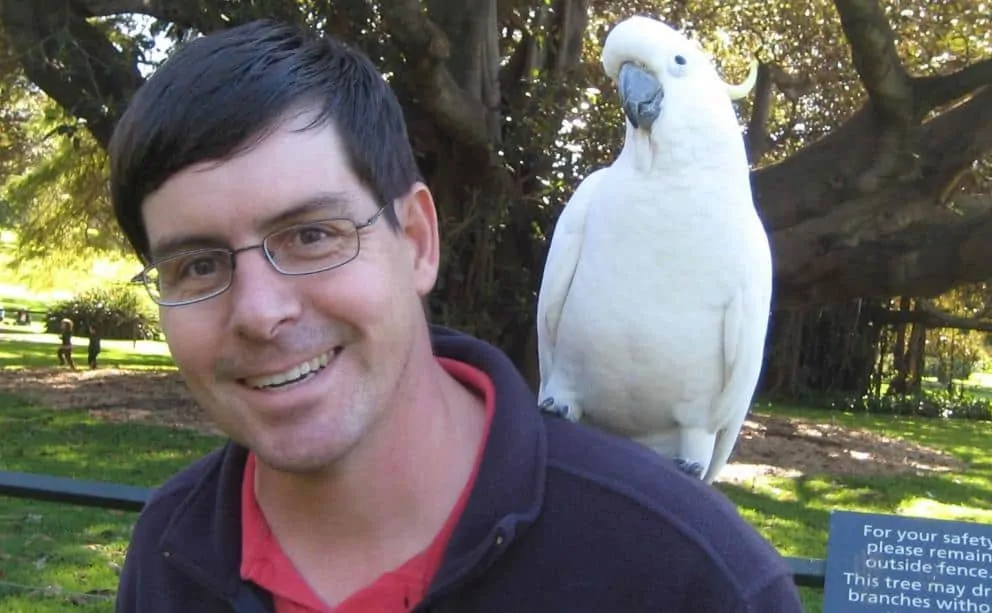
Gavin Andresen enjoying a day off with a friend
Friday, 07 / 03 / 2014
'I am not Dorian Nakamoto' With this concise comment to his own post on 'Bitcoin open source implementation of P2P currency' published on February 11, 2009, he completely refutes the theories of the media Newsweek and Gizmodo, who claimed on March 6, 2014 that Dorian Prentice Satoshi Nakamoto could be the creator of Bitcoin.
Some believe that Nakamoto's account within the P2P Foundation may have been hacked and that it was not really he who posted the message. The alleged hacker has never shown his face. During the following days he said he had access to Nakamoto's email account and that he had in his possession the real identity of Nakamoto, going so far as to ask for 25 bitcoins in exchange for the information. This was never made public and we do not know if the real Satoshi Nakamoto published the message or was an attacker.

Satoshi Nakamoto's message in 2014 where he denies being Dorian Nakamoto
Main candidates to be Satoshi Nakamoto
Before entering the list of possible people behind the figure of Nakamoto, it should be noted that the greatest probability is that he is not a solo individual, but actually a group of people related to the world of computing, the cryptography and the Cypherpunk movement.
Hal Finney
Without going into depth in his professional or personal career, Finney( deceased) is perhaps the strongest candidate to be Nakamoto for some of his published texts. He was a person closely related to the origin of the Cypherpunk in San Francisco and a passionate about cryptoand computer security. Before being related to Bitcoin, he published the following works:
- 19 / 08 / 1993: Digital Cash and privacy
- 15 / 10 / 1993: Detecting double spending (revised on 13/03/1996)
- 02 / 01 / 1994: Politics vs Technology
- 30 / 03 / 1994: PGP Web of Trust misconceptions
- 15 / 08 / 2004: RPoW. Reusable Proof-of-Work
We can see that some of these works, especially the one published in 2004, have a lot to do with the bases of Bitcoin, it is more RPoW (which proposed improvements for the systems that implemented PoW, such as HashCash) could well be the basis of the proof of work used in Bitcoin today.

Hal Finney with his wife Fran before a race
Perhaps the most relevant data is the tweet published on January 10, 2009. A few hours after Nakamoto released version 0.1 of the Bitcoin software. January 10 Finney posted on his Twitter account: 'Running Bitcoin' referencing that you were already using the software.
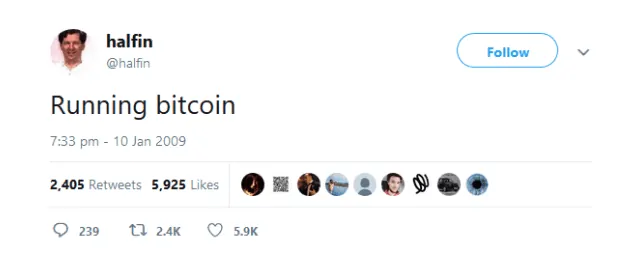
Hal Finney post on Twitter who has run the Bitcoin software a few hours after Nakamoto published it.
On January 12, 2009, just two days later, he receives 10 bitcoins from Nakamoto to test the sending of cryptocurrencies. This would be the first bitcoin transfer that there is a record of.
Just at the peak of Finney's life and career, he received the worst possible news. In August 2009, he was diagnosed with Amyotrophic Lateral Sclerosis (ALS), a disease that damages cells of the nervous system, gradually decreasing their function until they die. Despite everything, he continued working, commenting that he was still programming, but that the task cost him 50 times more than before.
Finney published on March 19, 2013, in the Bitcointalk forum a letter called 'Bitcoin and me' in which he talks about the whole story between cryptocurrency and him. In it he points out that "I think I was the first person, after Satoshi, to run the Bitcoin client."
"Today satoshi's true identity has become a mystery, but at the time I thought I was dealing with a young man of Japanese descent who was extraordinarily intelligent and sincere."
Not only that, Finney ensures that: “I consider myself incredibly lucky to have been there from the beginning”
One year later, on March 25, 2014 Andy Greenberg, a journalist from Forbes does a He visits Finney who was already completely paralyzed by ALS to discuss the possibility that he was Nakamoto. In the conversation they discussed issues like your emails with Nakamoto and the history of his Bitcoin wallet. During the same Finney repeatedly denied being Nakamoto, and according to Greenberg, she believes Finney told the truth.

Hal Finney prostrated by the ALS assisted by his wife Fran who did not leave his side at any time
Greenberg also asked the handwriting analysis consultancy Juola & Associates to compare Finney's texts with those of Nakamoto, discovering an important similarity.
Robin Hanson, Finney's friend, former partner, and sometimes co-blogger noted that "There is at least a 15% chance that Hal was more involved than was said"
On August 28, 2014 Hal Finney dies from ALS. He is currently cryogenised in Alcor, Arizona (United States)
Perhaps the last piece of the puzzle is Dorian Nakamoto, of whom we speak below, a physicist who studied at Cal Poly University in Pomona and who worked for the US defense agency, as a computer engineer for technology and financial information companies. As it happens, Finney and Nakamoto lived very close and there are options for them to meet, adopting Hal Finney the name of this physicist to play clueless.
That Hal Finney could be the person (or one of them) who created Bitcoin, are just assumptions so far; But what is true and proven is his important contributions to the code from the first moments of the birth of Bitcoin.
And it will not be the only one…
[Tweet "Could Hal Finney be Satoshi Nakamoto's Real Identity?"]
Nick Szabo
The next candidate would be Nick Szabo, a top computer scientist, jurist, and cryptographer who laid the foundation for Bitcoin without knowing it. It was he who developed a theoretical mechanism of decentralized digital currency called 'Bit Gold', which never materialized and remained at the theoretical level and also developed the concept of 'Smart Contracts'
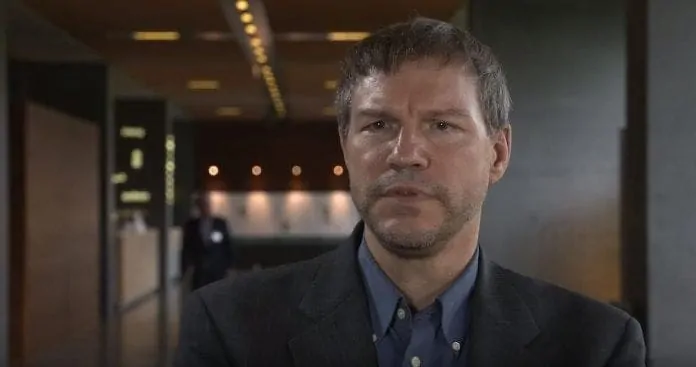
Nick Szabo was the one who laid the theoretical foundations for Smart Contracts
As we already explained in detail in the Smart Contracts chapter, are raised in 1994 as an evolution of basic contract law where there will be no intermediaries, physical documents or bureaucracy that slows down the process and makes it expensive. The idea was a software that was automatically executed and was liquidated when its conditions were fulfilled, thus releasing the assets or funds integrated into them.
It should be noted that in 2018 the United States Senate said:
“While Smart Contracts may sound new, the concept is based on basic contract law. Generally, the judicial system resolves contractual disputes and enforces the terms, but it is also common to have another method of arbitration, especially for international transactions. With Smart Contracts, a program applies the contract embedded in the code»
[Tweet "Nick Szabo postulated the theoretical basis of Smart Contracts that became popular on Ethereum"]
It was in 1998 when Szabo raised 'Bit Gold', a digital currency that required the participant to use the power of the computer to solve cryptographic puzzles. The resolution of the puzzles would be sent to a register called Byzantine Fault Tolerant (Byzantine Fault Tolerant) and the solver will be assigned a public key. Each solution would become part of the next challenge, generating a growing property chain. This allows a method for the network to verify and generate a timestamp on the new digital currencies, where most parties must accept the solutions or the next puzzle could not be started.
With this background in December 2013 the blogger Skye gray relates Szabo to the Bitcoin Whitepaper through stylometric analysis. We also know that Szabo already used other pseudonyms in the 90s. In May 2011 Szabo published a note regarding the possible identity of Nakamoto, declaring verbatim:
"Wei Dai, Hal Finney and myself were the only people I know who liked the idea enough to chase it down to Nakamoto (assuming Nakamoto is not really Finney or Dai). Only Finney (RPOW) and Nakamoto were motivated enough to implement such a scheme. "
Dominic frisby He is a financial author who conducted a major investigation into the possibility that Szabo was Nakamoto, and concluded that there is no reliable evidence of this, only circumstantial evidence. Frisby during an interview on Kaiser Report on RT highlighted that: “I have come to the conclusion that there is only one person in the whole world who has the full breadth but also the specificity of knowledge and it is this guy…”
In July 2014, Szabo writes to Frisby to say: "Thanks for your notice. I'm afraid you were wrong to hurt me like Satoshi, but I'm used to it."
The New York Times journalist, Nathaniel Popper established that "la The most compelling evidence pointed to a lonely American man of Hungarian descent named Nick Szabo."
The characters who lay the foundations of Bitcoin
Although these two characters that we will mention below are unlikely to be Satoshi Nakamoto themselves, their works serve as the basis for the development of Bitcoin and it is not ruled out that they play some type of more relevant role than can be imagined or seen with the naked eye in the development of Bitcoin.
Adam Back
Adam Back is a British cryptographer who defines himself as'Cypherpunk'developed the basis of the proof of work: HashCash.
This solution, which was devised as a system to prevent spam, is a key theoretical component of the «Proof of Work (PoW)», the algorithm in the Bitcoin consensus search.
HashCash Basically it consisted of a system that forced those who wanted to send an email, post to a blog or forum to do a small computer calculation (work); in this way, a mark (proof) was created in the mail or comment indicating that it was not garbage (spam)

Adam Back devised Hashcash to combat spam and years later Satoshi Nakamoto adapted it for his decentralized digital currency
Such work required processor power and a time that was only a few seconds, but that prevented spammers from sending thousands of emails per minute, allowing them to send only a fraction of those emails and making their work meaningless.
Although he is not considered the creator of Bitcoin, his work was essential to establish the proof of work system on which this cryptocurrency is based. Back is also the Blockstream CEO, a company whose mission is to develop Bitcoin and blockchain technology.
Wei dai
Little is known of Wei dai, computer engineer and Cypherpunk. Beyond being the creator of b money and developer of the Crypto ++ library. He is not very fond of public appearances and little is known about him.
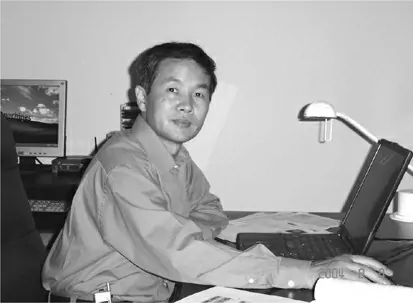
Wei Dai in his office in 2004. One of the few images of him that exist.
He graduated from the University of Washington with a degree in Computer Engineering. He is normally described as an 'intensely reserved computer engineer'. His profile as a member of the advisory board for VoteHere.net (web disappeared) indicated:
“Mr. Dai worked in the Cryptographic Research Group at Microsoft Corporation in Redmond, Washington. While at Microsoft, he was involved in the study, design, and implementation of cryptosystems for specialized applications. Before joining Microsoft, Mr. Dai was a programmer with TerraSciences of Acton, Massachusetts. Mr. Dai has a Bachelor of Science from the University of Washington in Computer Science, with a minor in Mathematics»
It was in 1998 when he published 'b-money, a distributed and anonymous electronic cash system' laying the foundations for today's crypto economy. Inside describes the basis of modern cryptocurrencies: "a scheme for a group of untraceable digital pseudonyms to pay each other with money and enforce contracts with each other without outside help"
Wei Dai's idea of b-money appears referenced in the original Bitcoin Whitepaper generating the basis of the project. Although Dai questions the influence of b-money on Bitcoin: 'I understand that the creator of Bitcoin, who goes by the name of Satoshi Nakamoto, did not even read my article before reinventing the idea himself. He found out later and credited me in his role. So my connection to the project is quite limited. '
As a curiosity, it should be noted that the smallest unit of Ether, the network's cryptocurrency Ethereum It receives the name of wei in honor of Wei Dai.
Dorian coincidence?
About the figure of Satoshi Nakamoto there are few emphatic statements. But perhaps the most resounding is the fact that Dorian Prentice Satoshi Nakamoto is not actually the same Satoshi Nakamoto creator of Bitcoin.
Journalist Leah McGrath Goodman from Newsweek magazine published on March 6, 2014 the discovery of a man of Japanese origin who lives in California that responds to the name of Dorian Prentice Satoshi Nakamoto, although the birth name is Satoshi Nakamoto.
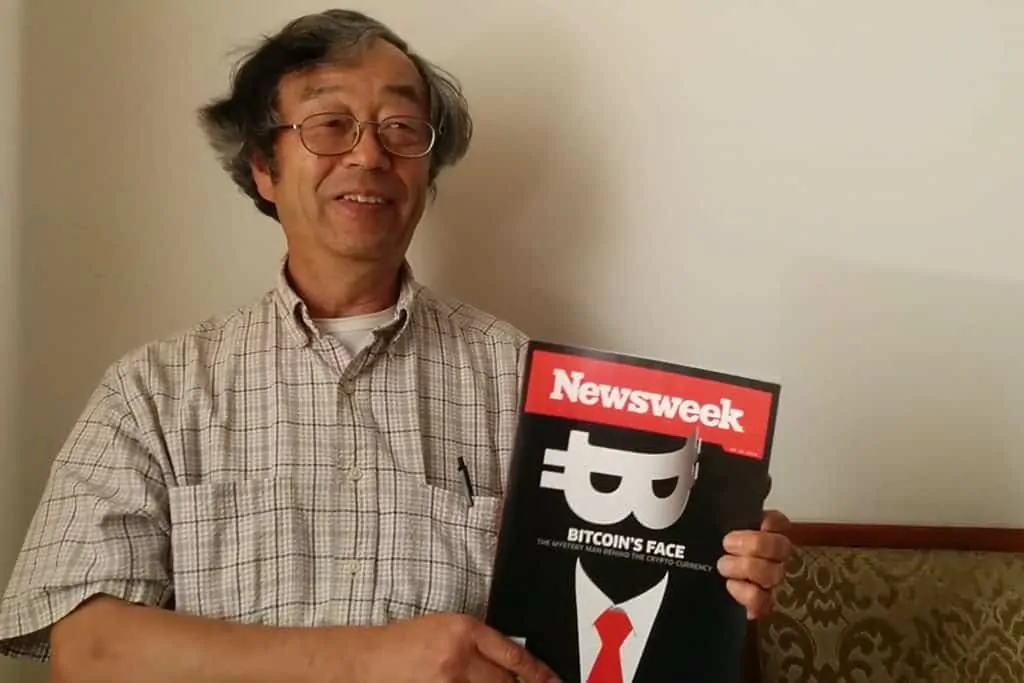
Dorian Nakamoto posing with Newsweek magazine that points out that he is the one behind the pseudonym Satoshi Nakamoto
Goodman uses a series of arguments that led him to believe that he was the creator of Bitcoin. Dorian (we'll call him that to distinguish him from the Satoshi Nakamoto creator of Bitcoin) graduated in physics from Cal Poly University in Pomona. He also worked as a systems engineer on classified defense projects and as a computer engineer for financial information and technology service companies.
Dorian was fired several times in the 90s and became a libertarian. Even encouraging her daughter to start a business of her own 'not under government control'
[Tweet "Dorian Nakamoto is the man who coincidentally has the same name as the creator of #Bitcoin, something that has made him famous."]
Goodman asks Dorian directly about the creation of Bitcoin in an interview, and Dorian seems to answer in the affirmative but ambiguous way about whether he is the creator of the cryptocurrency:
"I'm no longer involved in it and I can't discuss it. It has been given to other people. Now they are in charge of it. I no longer have any connection."
The article piqued the interest of the press, camping hundreds of journalists at his doorstep, being persecuted even while driving in his daily life. To settle the Dorian issue granted a fairly lengthy subsequent interview where he denied a connection to Bitcoin and claimed he had never heard of it and misinterpreted Goodman's question, which he thought was referring to his job as a military contractor.
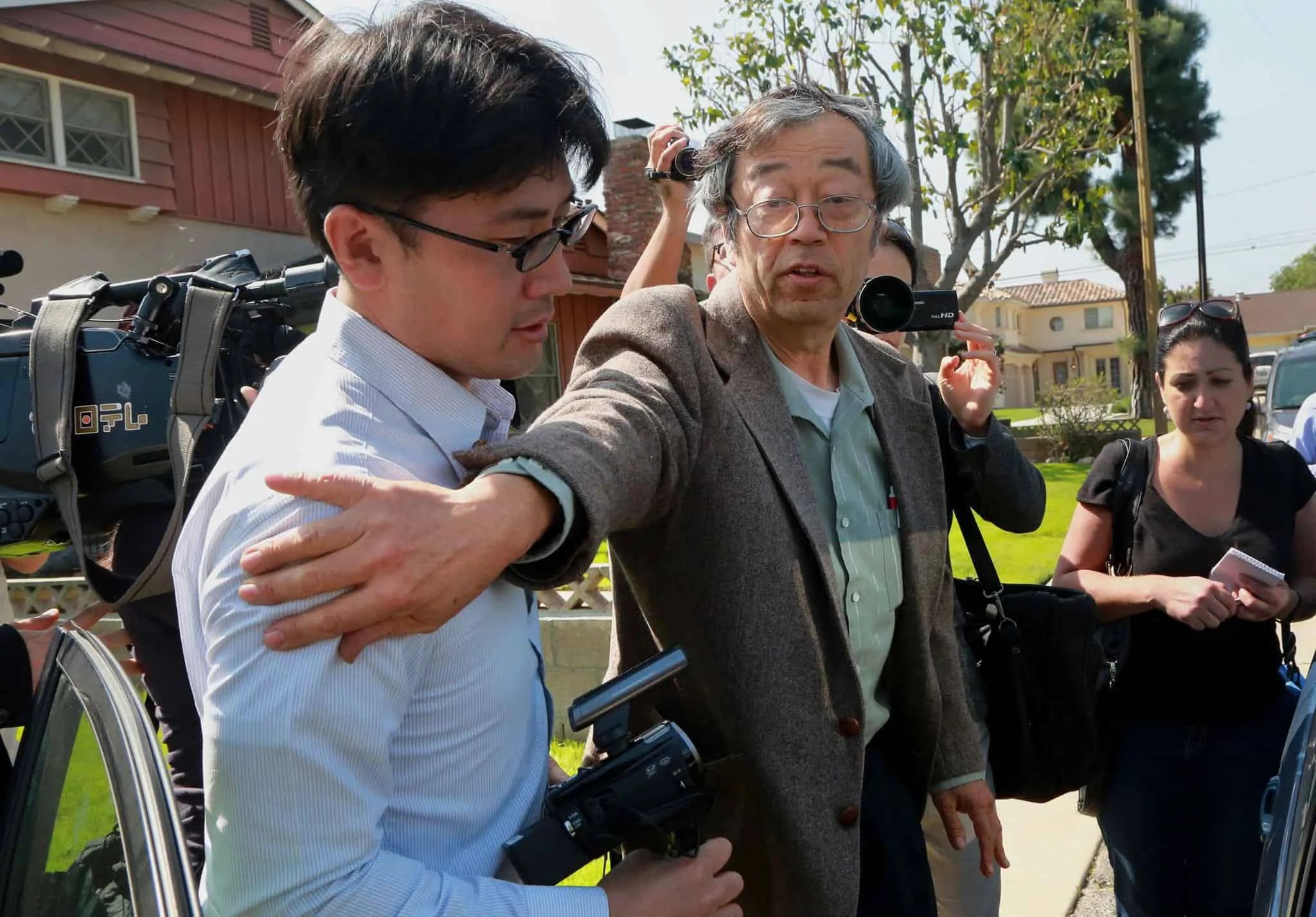
Dorian Nakamoto harassed by the press on his doorstep after Newsweek mistakenly pointed to who was the person behind the name of Satoshi Nakamoto
Later in an event 'ask me anything'(ask me anything) on Reddit said he thought Goodman's question was about his work at Citibank.
It seems that everything is settled when Nakamoto's profile is reactivated in the P2P Foundation and public: "I am not Dorian Nakamoto." Some claim that the account was hackedThere are even those who claim to be the author of the hack, but we have no evidence of this.
While Dorian gives two versions of Goodman's interpretation of the question, we can't help but wonder if he's trying to cover up for Hal Finney. It should be noted that Finney and Dorian lived a few kilometers away and it is possible that they met more than once in some talk, conference or symposium. Dorian became libertarian and Finney was a reputed Cypherpunk. This opens up the possibility of the existence of a very interesting connecting thread between the two.
The Wright satellite
At this point we must say that Hal Finney, Nick Szabo and Dorian Nakamoto were residents at that time in the United States and could have met at some point. Wei Dai was also and is an American, as far as we can tell. And, the only non-American is Adam Back. Although Dai and Back have never been strongly regarded as Satoshi Nakamoto.
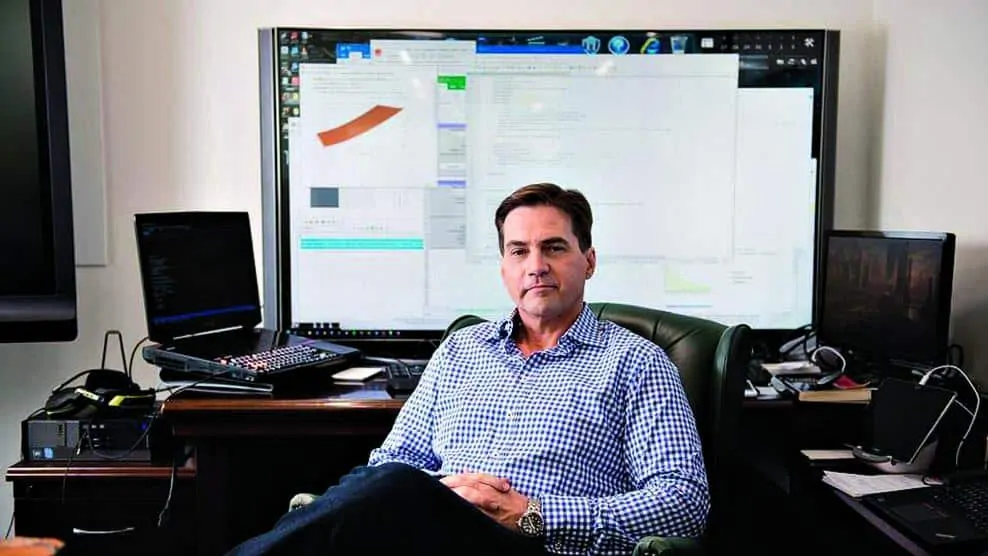
Craig S. Wright in his office
We call Craig Steven Wright a satellite because he is one of the candidates who has sounded the strongest as Satoshi Nakamoto. This since Wired and Gizmodo will point it out on December 8, 2015. This added to the fact that he does not reside or has not resided in the United States (that is known) permanently and for a long time.
Wright is an Australian computer scientist and entrepreneur who is first related to Satoshi Nakamoto on December 8, 2015 in Wired magazine, which highlights that 'invented Bitcoin or is a brilliant scammer who wants us to believe he did it'
After that publication, neither Wright nor his then wife, published anything on their Twitter accounts about it. That same day the middle Gizmodo publishes a story in which a hacker had allegedly obtained access to Wright's email accounts, saying that the pseudonym Satoshi Nakamoto was used by Wright and computer forensic analyst Dave Kleiman, who died in 2013.
Wright was supported and corroborated as Satoshi Nakamoto for Jon matonis, who was director of the Bitcoin Foundation, the crypto expert Ian Grigg and Bitcoin software developer Gavin Andresen.
Subsequently, reports have been published that suggest that the evidence is an elaborate montage, Wired magazine itself acknowledged 'having doubts' that Wright was actually Nakamoto.
Peter Todd, a Bitcoin developer, exposed that Wright's blog post that appeared to have cryptographic evidence, didn't actually contain them.
Bitcoin Core, the core Bitcoin software development group, posted a message on Twitter saying: «AThere is currently no publicly available cryptographic proof that anyone in particular is the creator of Bitcoin."
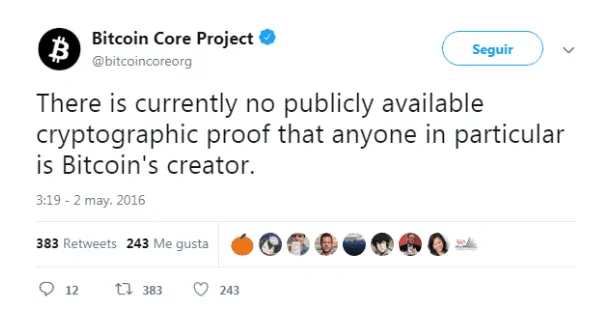
Bitcoin Core Takes Over Bitcoin Software Development, Denies Craig S. Wright
Jeff Garzik, Bitcoin developer said Wright's test doesn't really prove anything and the security researcher Dan Kaminski concludes that it is only Wright's attention-seeking and 'an international joke'
Charlie Lee creator of Litecoin (LTC) or Vitalik Buterin Creators of Etehreum (ETH) have been other figures to deny that Wright was really Nakamoto on his Twitter accounts.
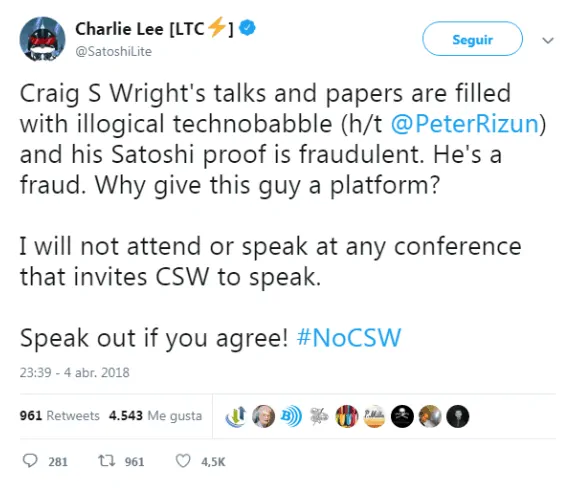
Litecoin creator Charlie Lee scoffs on Twitter for Craig S. Wright to say he's Satoshi Nakamoto
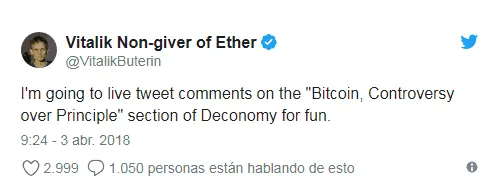
Series of Twitter messages from Vitalik Buterin, creator of Ethereum, explaining why Craig S. Wright is not Satoshi Nakamoto
Emir Gun Sirer, Professor and collaborator in the development of Bitcoin, he also charged against Wright, highlighting that he had achieved something unheard of and that was that the developers of Bitcoin, Ethereum y Zcash agreed to ridicule 'the technological babbling of Craig Wright'
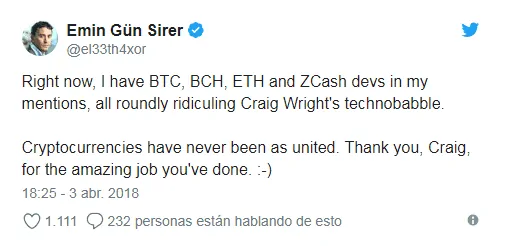
Bitcoin professor and developer Emin Gün Sirer also sees no evidence that Craig S. Wright may be Satoshi Nakamoto
Other possible candidates to be Satoshi Nakamoto
In addition to these possible candidates there are other names that have been mentioned on occasion. This by third parties and who have been denied by those involved. At a theoretical level these would be the least likely. Although in some cases and to a certain extent they could be, since the fact of having contributed to the development and popularization of Bitcoin as a cryptocurrency. This makes everyone in Nakamoto at least one part.
- The New Yorker: 2011: The journalist Joshua Davis claims that Nakamoto is the Finnish economic sociologist Dr Vili Lehdonvirta and the Irish student Michael Clear, who subsequently graduated in cryptography from Trinity College Dublin. They both denied being Nakamoto
- Fast Company: October 2011: The investigative journalist Adam Peneberg in circumstantial evidence found data that Neal kink, Vladimir Oksmann y Charles bry They could be Nakamoto. This statement is based on a joint patent application which includes the phrase 'computer impassable to invest' in 2008 that appears in the Nakamoto Whitepaper. The bitcoin.org domain was registered three days after the patent was filed. The three have denied being Nakamoto.
- Wired: November 2011: It is noted that Laszlo haynecz, former Bitcoin Core developer featured in one of his emails to Nakamoto that the code was too well designed to be a single person.

Laszlo buying 2 pizzas with Bitcoin again, but in this case using the Lightning Network
- Ted Nelson. May 2013: Speculated it could be the Japanese mathematician Shinichi Mochizuki. Later the journalist published in the Age that Mochizuki denied the possibility without giving sources or more data
- Vice. 2013: The media claims in an article that Gavin Andresen, Jed mccaaled and even a US government agency (mindless conspiracy) were candidates to be Nakamoto. It was also suggested that it could be the security investigator Dustin D Trammel, who flatly denied it
- Dorit Ron and Adi Shamir. 2013: These two Israeli mathematicians published a document where they claimed that there were links between Nakamoto and Ross William Ulbritch. Mathematicians' suspicion is based on the study of transactions on the Bitcoin network. Later they retracted this information.
- The Guardian. April 2013: It is speculated that it is Dan Kaminski, a security researcher who read the Bitcoin code and claimed that Nakamoto could be a 'group of people' or a 'genius'
- Sahil Gupta. 2017: Former SpaceX worker public on the Hackernoon Medium that there was a possibility that the CEO of Tesla and SpaceX, Elon Musk, was really Nakamoto, highlighting Musk's technical experience with financial software (he is one of the founders of PayPal) and your Whitepapers posting history. On November 28, Musk posted a series of tweets saying that this was false.

Sahil Gupta and other people think that Satoshi Nakamoto could be Elon Musk, which he quickly denied to avoid problems
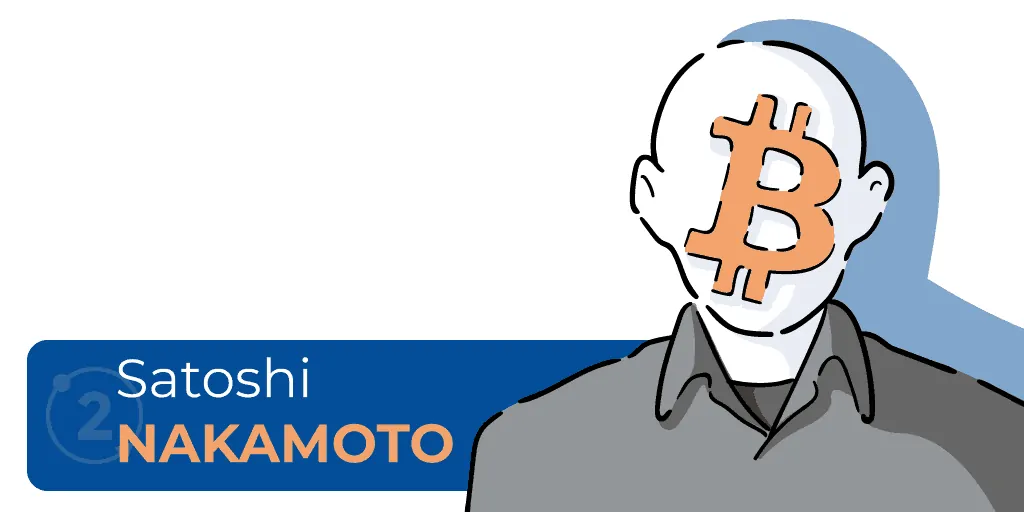
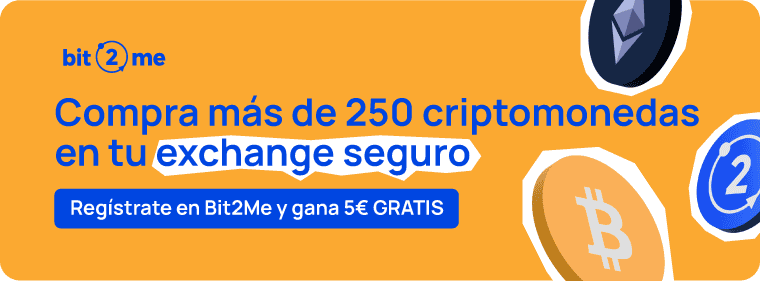
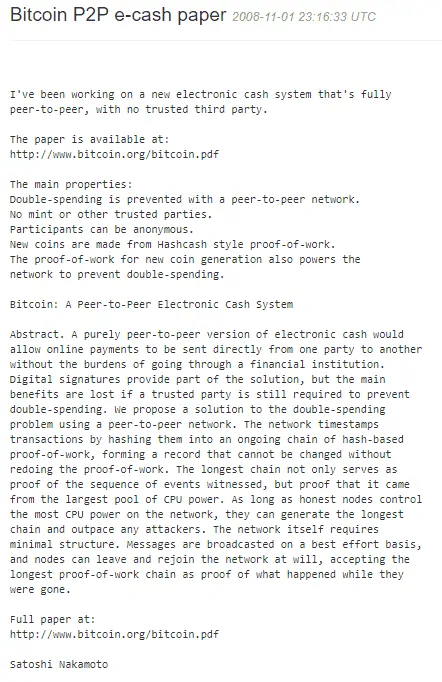
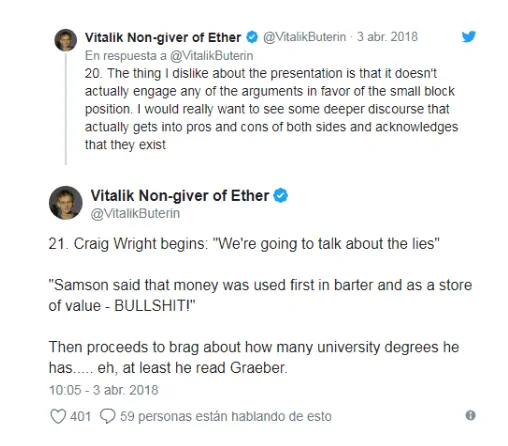
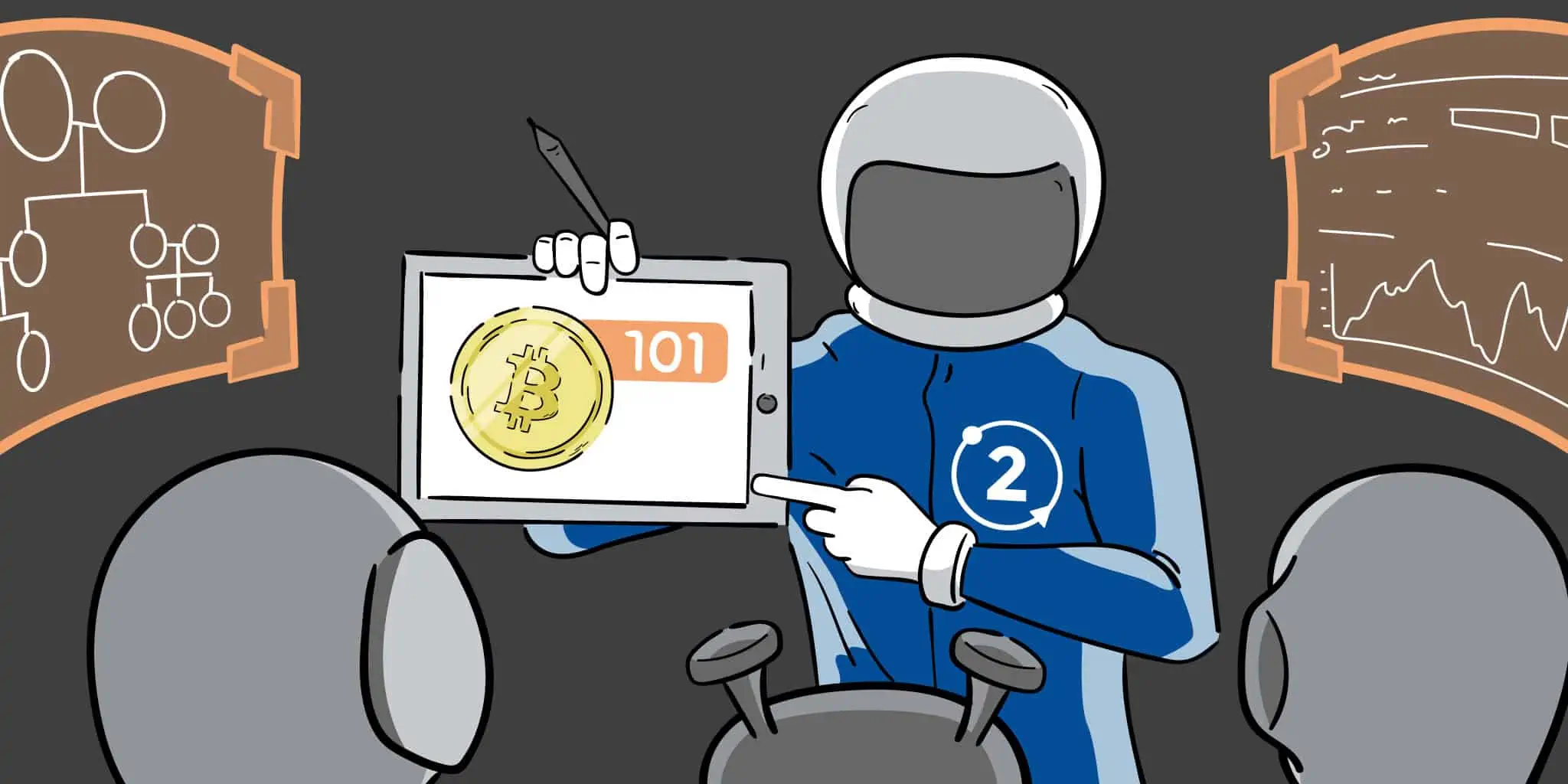

 Author
Author